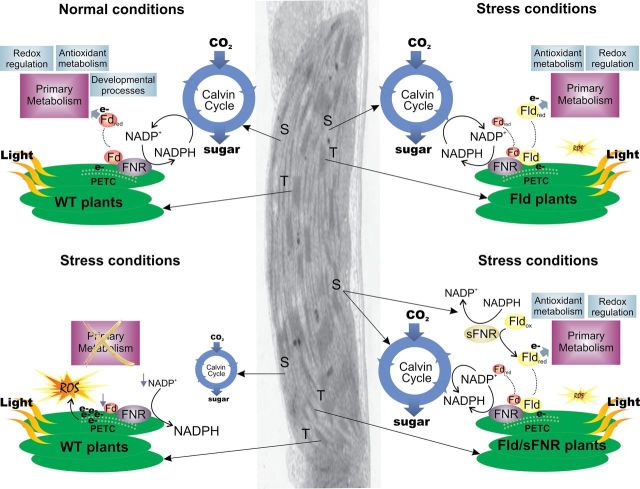Fig. 2.
Proposed model for the protective mechanism of Fld in plastids of transgenic plants. A transmission electron micrograph of a chloroplast is used to illustrate the places (thylakoids or stroma) where the various reactions are expected to occur. The situation in WT plants under normal growth conditions is shown in the top left panel, with Fd acting as the regular shuttle between the PETC and electron-accepting processes of the chloroplast. Stress conditions in WT lines (bottom left) lead to Fd down-regulation, NADP+ exhaustion, and ROS build-up. Most central metabolic routes, including the Calvin cycle, are inhibited, whereas a few, such as respiration, are unaffected or even induced (not shown). Fld expression in stressed plants (top right) bypass Fd limitation, reactivating electron delivery to metabolic sinks. Simultaneous expression of Fld plus a soluble FNR (sFNR) in stressed plants (bottom right) further improves NADP(H) turnover and distribution of reducing equivalents to productive routes, resulting in increased tolerance to environmental hardships. T, thylakoids; S, stroma; ox, oxidized; red, reduced. Other abbreviations are given in the text.

